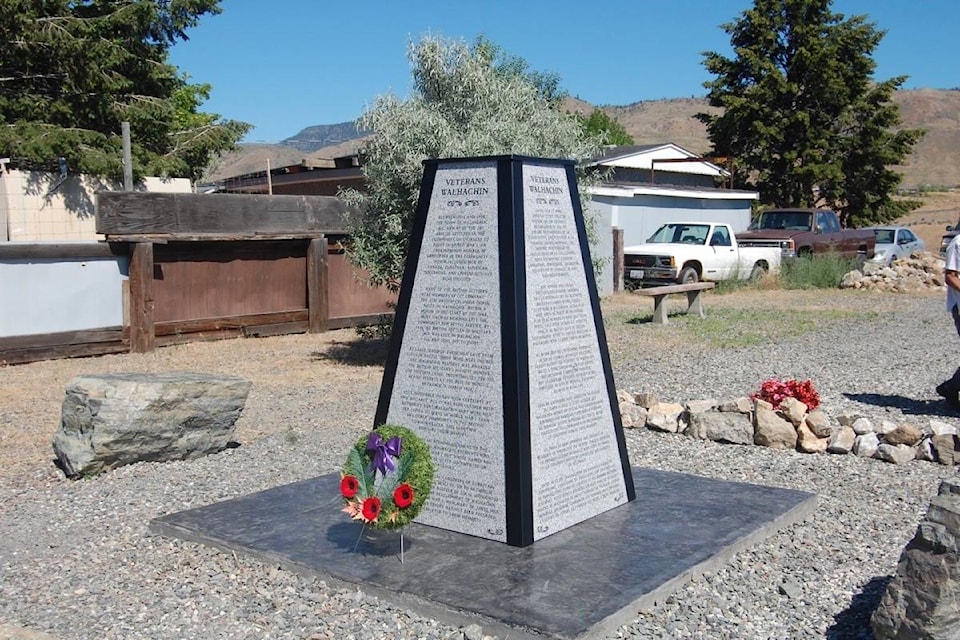A cenotaph commemorating the more than 100 men from Walhachin who enlisted and fought in World War I was unveiled as part of the third annual Walhaschindig on June 16, with more than 80 people gathering to mark the occasion.
The tiny community is widely held to have had the largest per capita enlistment of men in WWI of any community in the British Commonwealth. Many of the men were injured or killed, including Walhachin resident Lt. Gordon Flowerdew, who was 33 years old when he was killed after leading a cavalry charge at the Battle of Moreuil Wood in March 1918. Flowerdew was posthumously awarded the British military’s highest honour, the Victoria Cross, for his “most conspicuous bravery”.
One of Flowerdew’s grand-nieces, Patricia Flowerdew Owen, was at the ceremony, and read from letters that her uncle had sent home from the front. In them he requested that someone send a crate of Walhachin apples, and reminisced about days spent fishing in the Thompson River.
Other speakers included Gail Madrigga, coordinator for Mission-Matsqui-Fraser Canyon MP Jati Sidhu; TNRD Area “I” director and chair of Gold Country Communities Society Steve Rice; TNRD board chair John Ranta; Clarence Schneider of Royal Canadian Legion Branch #52 (Kamloops); Pat Kilt of RCL Branch #113 (Ashcroft); and Assu Nydam, president and curator of the Friends of Walhachin Society and Museum. A statement from Fraser-Nicola MP Jackie Tegart was also read out.
Many of the above placed wreaths at the cenotaph as the Sage Sound Singers performed the haunting song “After the War” from the Canadian film Passchendaele, set during WWI. Sharon Reid, representing the Ladies Auxiliary to Legion Branch #113 also placed a wreath.
The cenotaph project was spearheaded by the Gold Country Communities Society, which also provided funding. Additional funding was received from the New Pathways to Gold Society, the B.C. Museum’s British Columbia/Canada 150: Celebrating BC Communities and their Contributions to Canada grant program, and Legion Branches 52 and 113.
Event emcee Barbara Roden, who researched and wrote the wording on the cenotaph, said during her address that “It is fitting that these men are now being honoured with a cenotaph. From coast to coast, in villages, towns, and cities, cenotaphs are places of gathering, commemoration, and remembrance. If any community in Canada deserves a cenotaph, it is Walhachin.
“This cenotaph will stand as a tribute to all of the Walhachin soldiers who served their country: those who are known, and those who remain unknown.
“It is not often that one can be a part of history, but we have all been that today, commemorating those men who lived here more than a century ago and who will live on, commemorated by this cenotaph. ‘We will remember them.’”
editorial@accjournal.ca
Like us on Facebook and follow us on Twitter
